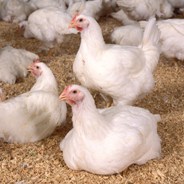Injecting poultry litter into soil to prevent runoff

A soil scientist from the US Agricultural Research Service (ARS) will soon investigate an experimental method of injecting chicken litter into the soil to keep this natural fertiliser from contaminating water runoff.
Peter Kleinman will undertake his research in the Delmarva region, which has around 2,700 poultry farms that each year raise 571,141,000 chickens and produce 600,000 tons of litter.
The litter, a combination of manure and bedding straw, is an ideal fertiliser for corn, soybeans and other Delmarva crops. However, spreading it over the soil surface exposes nutrients like phosphorus to runoff that can drain into the bay’s surrounding waters, triggering algal blooms that block sunlight and deprive fish, crabs and other forms of aquatic life of oxygen.
The increasingly popular use of no-till farming compounds the problem, according to Kleinman, with the ARS Pasture Systems and Watershed Management Research Laboratory.
Since 2005, he has been researching fertiliser-application equipment called injectors, which squirt liquefied manure below the soil surface. Tom Way, a collaborator with the ARS Soil Dynamics Laboratory, developed the new litter-injector technology.
Now, in collaboration with the University of New Hampshire’s Cooperative Institute for Coastal and Estuarine Environmental Technology and the National Oceanic and Atmospheric Administration, they’re exploring equipment modifications that could enable the injection of chicken litter into the Delmarva Peninsula’s sandy soils.













